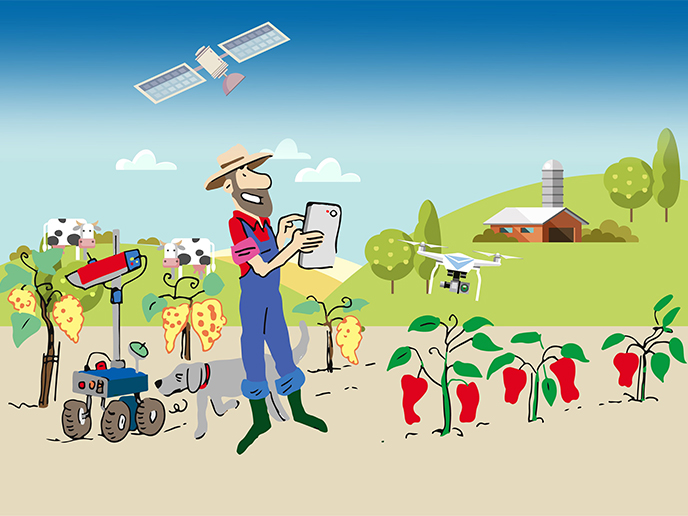Precision Farming: Sowing the seeds of a new agricultural revolution
Precision farming has the potential to contribute to the wider goal of meeting the increasing demand for food whilst ensuring the sustainability of primary production, based on a more precise and resource efficient approach to production management – in essence ‘producing more with less’. With the explosion in the digital revolution, technologies focused on, for example, Big Data and ‘the Internet of Things’ have also opened numerous doors for the advancement of precision farming techniques. With 70 to 80 % of new farm equipment having some form of precision farming component within them, precision farming technologies are now present in all four stages of the crop growth cycle (soil preparation, seeding, crop management and harvesting). However it is not just crop and fruit farming that has benefited – farmers engaged in livestock rearing are also experiencing the positive benefits derived from precision farming technologies.
Economic and Environmental Benefits
The European Commission has been extremely keen on fostering precision farming techniques, providing funding for new investments through both the FP7 and Horizon 2020 programmes. This is to guarantee that farmers are not only able to effectively reduce costs without cutting production but also to offer the possibility of substantially increased yields, thus providing an even stronger boost to local economies. Alongside economic considerations, precision farming also promises substantial environmental benefits, being seen as a means to make Europe’s agri-food sector more sustainable in the long-term, particularly in the drive to reduce the sector’s use of agro-chemicals, such as pesticides. Such environmental benefits will also feed into the EU’s much larger environmental ambitions, such as the tough targets envisioned in the Paris climate change agreement.
Showcasing innovative EU research
This CORDIS Results Pack introduces you to 17 EU-funded projects that have been at the forefront of the precision farming revolution. Several showcased initiatives, including ECHORD Plus Plus (through its dedicated sub-projects GAROTICS and MARS), SWEEPER and VINEROBOT have focused on the development of advanced robotic solutions that will be directly deployed into fields and greenhouses to make the evaluation and picking of crops more efficient and less labour-intensive. Other projects have concentrated on cutting-edge sensor systems that are able to monitor and analyse agricultural data. In particular, the FIGARO project has developed a complex set of sensors that substantially improves irrigation management for high water-consuming crops, whilst the SYMPHONY project has devised an early-warning system that quickly detects the presence of toxins in milk, thus promising to be of enormous aid to dairy farmers. Finally, the development of innovative apps and open ICT platforms that aim to advise, inform and assist farmers, as well as encourage active cooperation amongst users, has been the primary goal of another group of projects. The AGROIT project has implemented such an open platform, harnessing the power of modern smartphones and the app economy. Meanwhile, the FOODIE project has put in place a Cloud-based platform to host both spatial and non-spatial agricultural data, whilst the AUDITOR project has developed a ground-based GNSS augmentation system able to deliver high-performance and cost-efficient services and applications to farmers.
2018: New projects added
We have now comprehensively updated the Pack with the addition of four new projects that were not advanced enough to be featured when it was first published in 2017. Included in this new update, the 4D4F project has helped dairy farmers base management decisions on data, such as that gathered by sensing equipment, leading to best practices for more sustainable dairy farming. The IoF2020 project has developed new solutions to better integrate ‘Internet of Things’ (IoT) technologies into agricultural processes, whilst the RECAP project provides a repository of data that can be used to guide farmers to be compliant with CAP rules applying to their farms. To round off this Pack update, the Smart-AKIS project presents farmers, advisors, researchers, entrepreneurs, innovation brokers, and others interested in the subject, with detailed information on what new technological developments within the field of smart agriculture are rolling out.



